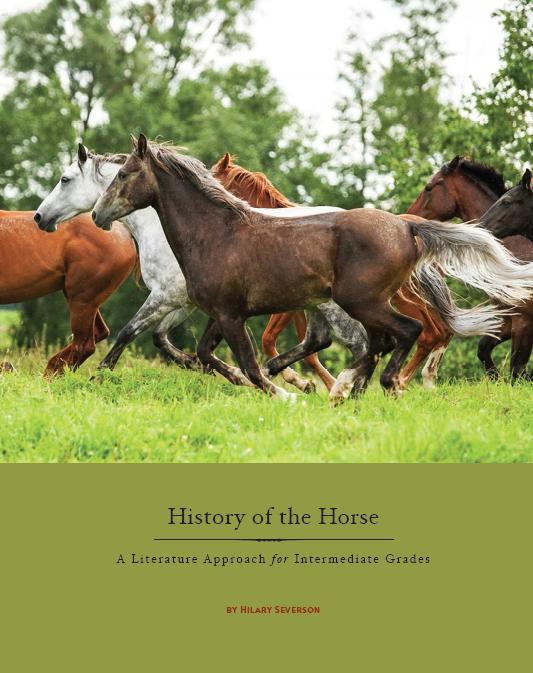History of the Horse: A Literature Approach for Intermediate Grades targets grades three through seven and serves as a study guide for a number of novels about horses. Students will be reading stories of horses, learning the history of horse breeds, learning about their physiology and markings, drawing them, etc.
The novels used for this study include a number of books by Marguerite Henry: King of the Wind; White Stallion of Lipizza; Justin Morgan Had a Horse; Misty of Chincoteague; Brighty of the Grand Canyon; and Mustang, Wild Spirit of the West. Students also read Black Beauty by Anna Sewell and The Black Stallion by Walter Farley. The study adds factual information with the books Album of Horses by Marguerite Henry and Smithsonian Handbooks: Horses by Elwyn Edwards. Students also learn to draw horses with Draw 50 Horses by Lee J. Ames.
The books introduce readers to stories that illustrate the history of horses themselves as well as horses in relation to historical events stretching back into the eighteenth century. Geographically, the stories take students to Africa, the Middle East, Europe, and America.
In addition to the required books, lessons recommend viewing movies based on the books students are reading. Some lessons include web addresses for free, online videos such as one on a "pony swim” inspired by the annual pony swims in Misty of Chincoteague or another on efforts to save wild mustangs. Students will use the internet for other research assignments as well. Just for fun, a deck of cards that comes with the course pack features images of 54 breeds of horses. The cards are used to play whatever games students wish, but the images are worth studying on their own.
The course has 93 lessons, and the study guide recommends completing three lessons per week. Following this plan, the course will take 31 weeks which is one school year. It primarily serves as a literature course, although children will be learning some history, geography, and science. Students also complete some activities in language arts and the fine arts, and lessons periodically present Bible verses to be memorized or Bible passages to be copied into the student’s notebook.
The introduction to the study guide explains how to use the course. Students will read, discuss, narrate either orally or in written form, and create a notebook.
The notebook should include coursework students produce: notes about what they have learned, maps that they draw, biographical sketches of authors and key historical figures, artwork (drawings, sketches, etc.), and a student-created glossary of words they will have learned.
Activities I have described in a general way in the previous paragraph are included in the lesson plans with instructions such as: “In glossary define: dais, galleon” ( p. 2) and “Have student narrate the Duchess and Earl’s kindness and character in the way they treated Agba” (p. 3). However, the guide rarely specifies that a narration should be done. The lesson plans more commonly specify reading assignments, discussion questions, glossary words, and assignments such as recording a memory verse in their notebook, researching a topic, or completing a drawing from Draw 50 Horses. Parents might require more frequent narrations than those specified, but if you stick with only what is specified in the lesson plans, there’s plenty of work. Of course, parents will need to decide which activities each child should complete since you wouldn’t expect a third grader to do a research paper as you would a seventh grader.
Horse enthusiasts are likely to love this course, and other students might become horse enthusiasts after completing this course, even if they started it reluctantly.










